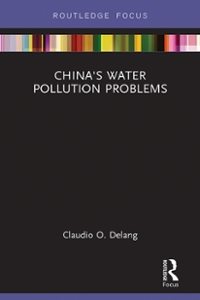Question
Please provide the correct and confirmed answer to get the full score on this Quiz ECON 101 QUIZ Q: Tick the correct answer in following:
Please provide the correct and confirmed answer to get the full score on this Quiz
ECON 101 QUIZ
Q: Tick the correct answer in following:
1. The practice of selling a good at different prices to different consumers is called:
| a. | Limit price | |
| b. | Price discrimination | |
| c. | Market price | |
| d. | Shut down price. |
2. Which of the following represents 'shut down price' under perfect competition?
| a. | The price at which economic profit is zero. | |
| b. | The price at which economic profit is positive. | |
| c. | Price being equal to average total cost. | |
| d. | Price being equal to marginal cost. |
3. Suppose buyers in the used car market are willing to pay $6,000 for a plum (high-quality) used car and $3000 for a lemon (low-quality) used car. If buyers believe that 50% of the used cars on the market are lemons (low quality), what would they be willing to pay for a used car?
| a. | $3000 | |
| b. | $3500 | |
| c. | $4500 | |
| d. | $6000 |
4. The change in cost from a one-unit increase in output is called:
| a. | Average variable cost. | |
| b. | Marginal cost. | |
| c. | Average total cost. | |
| d. | Opportunity cost. |
5. A firm is producing a quantity of 100 units, the market price is $20 and the firm's average cost is $18. What is the firm's total profit?
| a. | $50 | |
| b. | $100 | |
| c. | $200 | |
| d. | $300 |
6. An outcome of a game in which each player is doing the best he or she can, given the action of the other players is called:
| a. | Duopolists' dilemma. | |
| b. | Dominant strategy. | |
| c. | Nash equilibrium. | |
| d. | A tit-for-tat strategy. |
7. You sell your good in a perfectly competitive market where the market price is $10.00. When you sell 70 units your total revenue is $700. When you sell 71 units,
| a. | total revenue increases by $10. | |
| b. | total revenue increases by less than $10. | |
| c. | total revenue increases by more than $10. | |
| d. | total revenue may increase or decrease. |
8. Suppose a market consists of six firms. The largest firm have 30% of the market, the second have 25%, the third have 20%, the fourth with 15% and the next two firms each have 5% of the market, the four-firm concentration ratio is:
| a. | 55% | |
| b. | 60% | |
| c. | 70% | |
| d. | 90% |
9. Private goods are:
| a. | Nonrival in consumption and nonexcludable. | |
| b. | Nonrival in consumption and excludable. | |
| c. | Rival in consumption and excludable. | |
| d. | Rival in consumption and nonexcludable. |
10. The exclusive right to sell a new good for some period of time is called:
| a. | Natural monopoly. | |
| b. | Network externalities. | |
| c. | Licensing policies. | |
| d. | Patent |
Step by Step Solution
There are 3 Steps involved in it
Step: 1

Get Instant Access to Expert-Tailored Solutions
See step-by-step solutions with expert insights and AI powered tools for academic success
Step: 2

Step: 3

Ace Your Homework with AI
Get the answers you need in no time with our AI-driven, step-by-step assistance
Get Started


